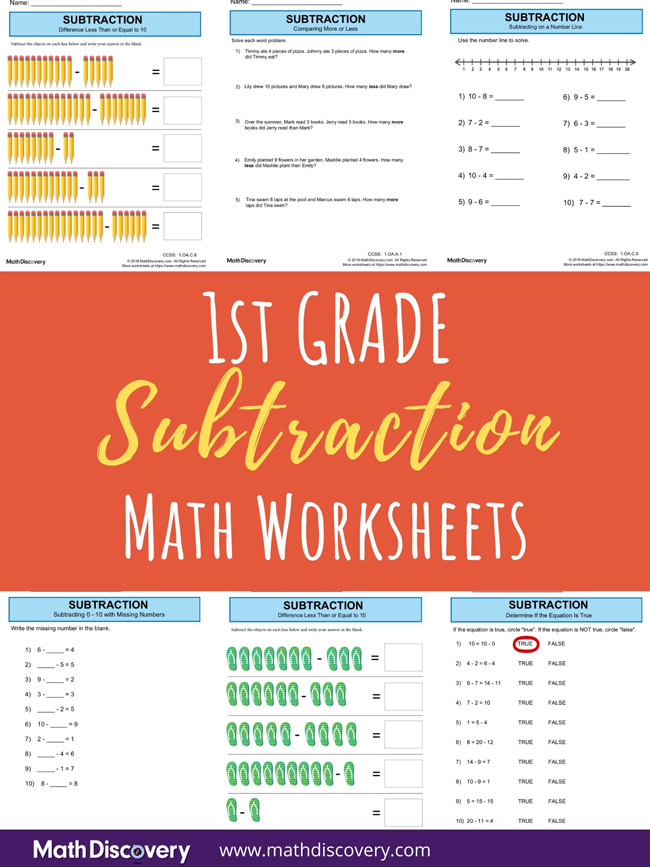1st Grade Subtraction Worksheets

1st Grade Subtraction
Students began to learn subtraction facts in Kindergarten. In Grade 1, students continue learning those facts to the point of mastering differences related to the sums within 10.
In addition to taking away, students learn that subtraction can be used to compare or to separate objects into two groups. Students are expected to master subtraction facts by the end of the year. You can use a chart similar to what you used for addition facts to keep track of what students have mastered. Students will learn how to use addition to help them subtract. When a student is stuck on a subtraction fact, ask them what the related addition fact is. Reducing subtraction to reversed addition facts significantly reduces the facts students have to hold in their memories.
(See complete 1st Grade Math Curriculum)
